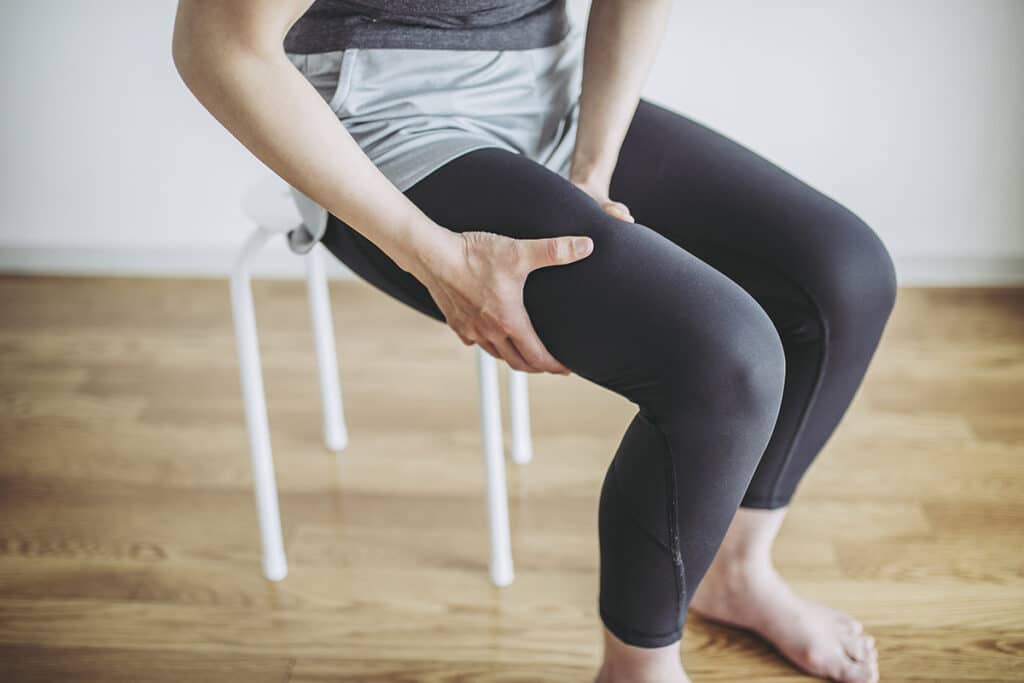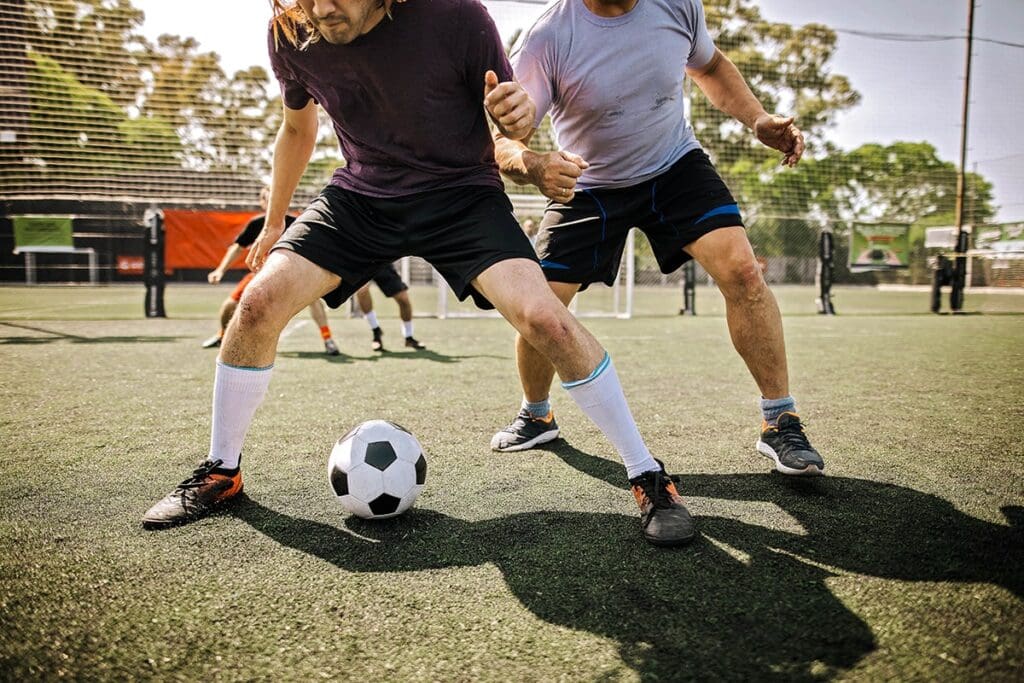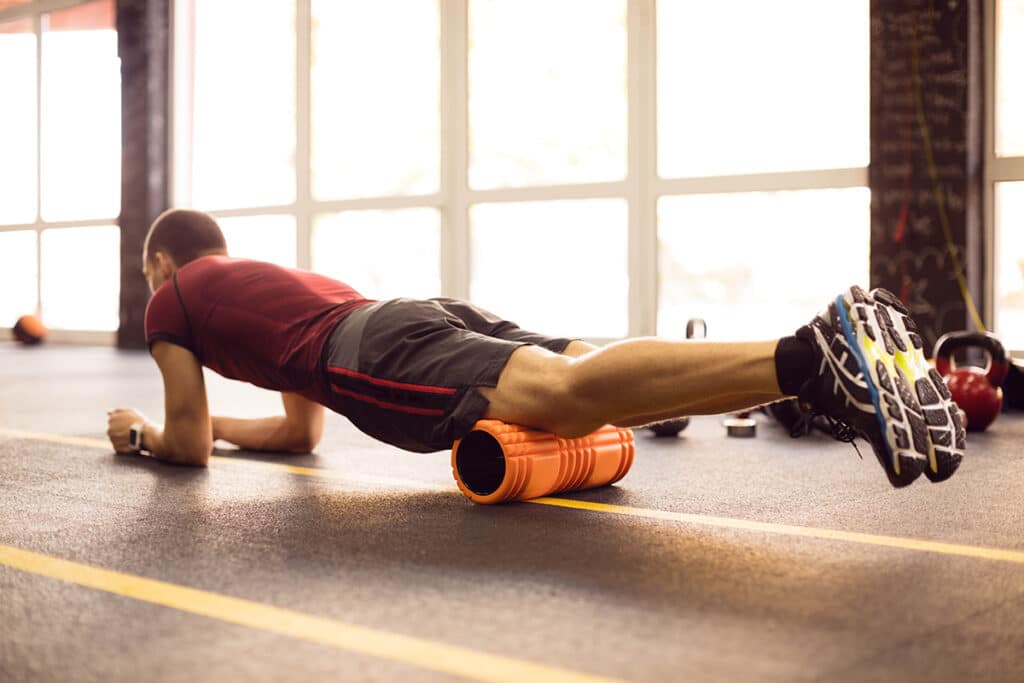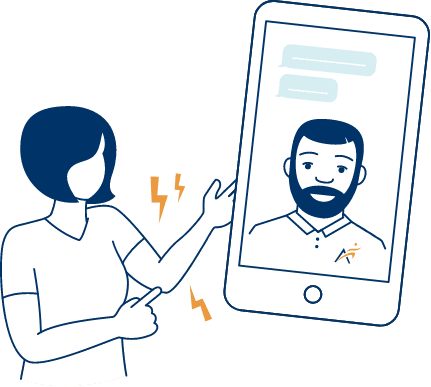(21,000+ reviews on Google across 150+ locations)
Adductor strains, also known as groin pulls, are no laughing matter. Watch as Airrosti’s Oluwasegun Olomojobi, PT, DPT explains groin pulls, how you get them, and the common signs and symptoms. Learn how traditional healthcare may approach treating adductor strains compared to Airrosti’s approach. If you think you may be suffering from a groin pull, schedule an appointment with Airrosti, either in clinic or virtually!
An adductor strain, also called a groin pull or strain, is an acute injury to the muscles on the inside of the thigh, known as the adductor muscles. These muscles help to stabilize your hips and move the legs inward. A groin strain can be caused by an athletic injury or sudden leg or hip movements. This can cause the inner thigh muscles to stretch or tear.
The group of muscles commonly involved with adductor strains includes the adductor muscles (longus, medius, and magnus), the gracilis, and the pectineus muscles. The adductor longus, which runs from the pubic region of the pelvis down the inner thigh, is the most common location of injury.

A strain injury is graded I-III based on its severity. Mild strains involve overstretching of the muscle, whereas more severe strains can involve complete muscle tears. Most injuries to the adductor muscles are Grades I or II.
Grade 1 groin strains are mild injuries characterized by minimal muscle damage, typically resulting from stretching or minor tearing of the groin muscles. Symptoms include mild pain, tightness, and discomfort in the groin area. There is little to no loss of strength or function. Recovery time is relatively short, typically lasting a few weeks with appropriate rest, ice application, and gentle stretching exercises.
Grade 2 groin strains are moderate injuries characterized by a partial tear of the groin muscles. They result in more pronounced pain, swelling, and limited movement. There is a noticeable loss of strength, flexibility, and function in the groin area, possibly accompanied by bruising. Recovery time is longer, typically ranging from several weeks to a few months, and often involves physical therapy or rehabilitation exercises to regain muscle strength and flexibility.
Grade 3 groin strains are severe injuries characterized by a complete tear or rupture of the groin muscles. They cause intense pain, swelling, and a significant loss of function. Individuals may experience limited or no ability to bear weight or perform normal activities.
Visible bruising and swelling in the groin area are common. Recovery time is the longest, often lasting several months or more, and typically involves rest, rehabilitation, and possible surgical intervention to repair torn muscles.
Commonly, strains in the groin muscles occur during sudden muscle contraction, such as when kicking, pivoting, or skating.
Groin pulls are a higher risk for people who play sports that involve running and jumping. In addition, sudden jumping, changes in direction, or falls can also result in a groin pull. These pulls often appear in people who play soccer, football, basketball, or even activities such as martial arts.
In addition, failing to properly warm up and stretch before physical activity can also increase your risk of a groin pull.
Other risk factors include:

Depending on the underlying cause, pain can be mild or severe, come on gradually or suddenly, and vary in sensation (dull, sharp, throbbing, or even burning). Common symptoms include:

In mild to moderate cases of an adductor strain, conservative care is commonly the best treatment option. Methods such as rest from physical activity, icing the affected area on and off, and compression through a wrap or tape can be beneficial. These options may help reduce pain, as well as improve symptoms. Additionally, your primary care provider may recommend taking medicine for pain, such as over-the-counter anti-inflammatory drugs.
For more severe groin strains, if conservative care methods are not relieving symptoms and improving your condition, you may need physical or manual therapy to help rebuild strength and mobility in the area. If the injury does not improve, surgery may be advised to repair any torn muscles or tendons. However, you should always discuss which treatment is best for you with your medical provider, depending on the severity of your adductor strain.
While most adductor strains respond well to conservative care, the recovery time can be long and frustrating. Lengthy recovery times can hinder your overall quality of life, from work to the amount of physical exercise or training you can perform. If your injury is not improving, intervention by a trained provider may be necessary.
Should you be suffering from a groin strain that doesn’t seem to be healing, visit Airrosti! Our Airrosti Providers will thoroughly assess your injury and treat it right at the source. Furthermore, your Provider will create a personalized treatment plan for you and provide injury education and resources to continue your recovery at home. By treating and improving injuries in an average of 3 visits (based on patient-reported outcomes), Airrosti can help you get back to the activities you love and live your best life!
Schedule your first appointment, either in clinic or virtually. For more information, call us at (800) 404-6050.
Read our Medical Disclaimer here.
Reviewed by Casey Crisp, Doctor of Chiropractic
Disclaimer: Always consult with your doctor before starting any exercise program. If you experience any numbness, tingling or reproduction of your symptoms, please contact your doctor.

I have been struggling for years with pubic bone pain (or so I thought) after giving birth to my kids. I couldn’t run anymore. Dr. Rowland-Jones was absolutely amazing at working with me and figuring out it was a muscular issue. I’m still working on my overcompensation but it feels so nice to have answers, a plan to help the problem, and solutions to help manage and relieve my pain.
by Kendra Ross
